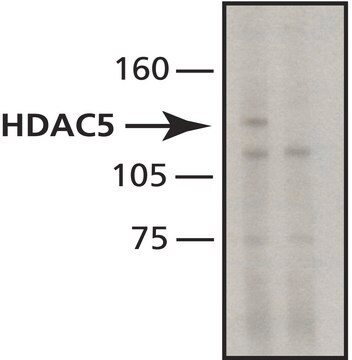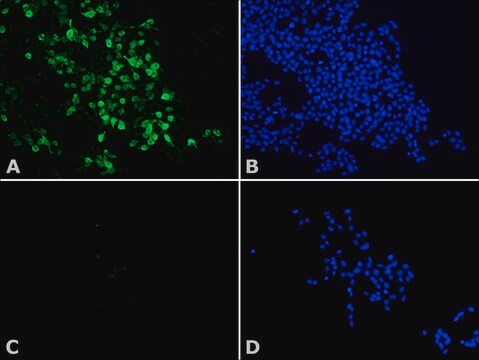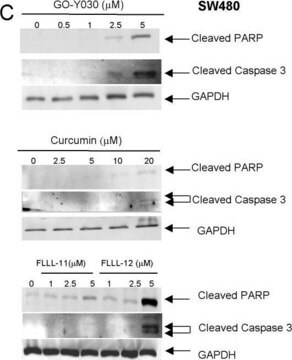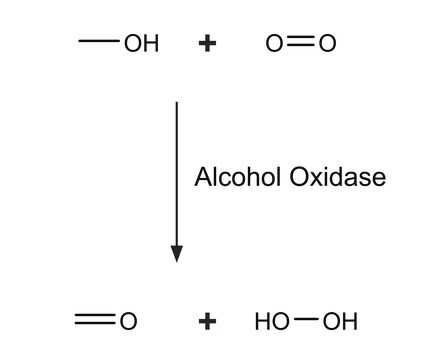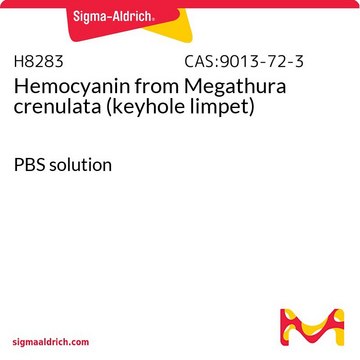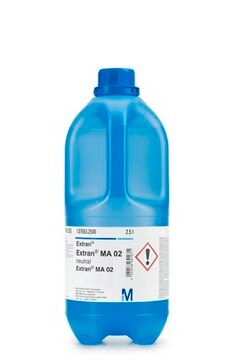H0163
Anti-Histone Deacetylase 4 (HDAC4) antibody, Mouse monoclonal

clone HDAC4-144, purified from hybridoma cell culture
About This Item
Prodotti consigliati
Origine biologica
mouse
Livello qualitativo
Coniugato
unconjugated
Forma dell’anticorpo
purified from hybridoma cell culture
Tipo di anticorpo
primary antibodies
Clone
HDAC4-144, monoclonal
Stato
buffered aqueous solution
PM
antigen ~140 kDa
Reattività contro le specie
human, rat, mouse
Convalida avanzata
independent
Learn more about Antibody Enhanced Validation
Concentrazione
~2 mg/mL
tecniche
immunocytochemistry: suitable
immunoprecipitation (IP): suitable
western blot: 1-2 μg/mL using total cell extracts of NIH3T3 fibroblasts cells
Isotipo
IgG2a
N° accesso UniProt
Condizioni di spedizione
dry ice
Temperatura di conservazione
−20°C
modifica post-traduzionali bersaglio
unmodified
Informazioni sul gene
human ... HDAC4(9759)
mouse ... Hdac4(208727)
rat ... Hdac4(363287)
Descrizione generale
Applicazioni
- enzyme linked immunosorbent assay (ELISA)
- immunoblotting
- immunocytochemistry
- immunoprecipitation
Azioni biochim/fisiol
Stato fisico
Esclusione di responsabilità
Non trovi il prodotto giusto?
Prova il nostro Motore di ricerca dei prodotti.
Codice della classe di stoccaggio
10 - Combustible liquids
Classe di pericolosità dell'acqua (WGK)
nwg
Punto d’infiammabilità (°F)
Not applicable
Punto d’infiammabilità (°C)
Not applicable
Scegli una delle versioni più recenti:
Possiedi già questo prodotto?
I documenti relativi ai prodotti acquistati recentemente sono disponibili nell’Archivio dei documenti.
Articoli
Huntington's disease (HD) is an autosomal dominant, late-onset neurodegenerative disorder characterized by a selective neuronal cell death in the cortex and striatum leading to cognitive dysfunction, motor impairment and behavioral changes.
Il team dei nostri ricercatori vanta grande esperienza in tutte le aree della ricerca quali Life Science, scienza dei materiali, sintesi chimica, cromatografia, discipline analitiche, ecc..
Contatta l'Assistenza Tecnica.